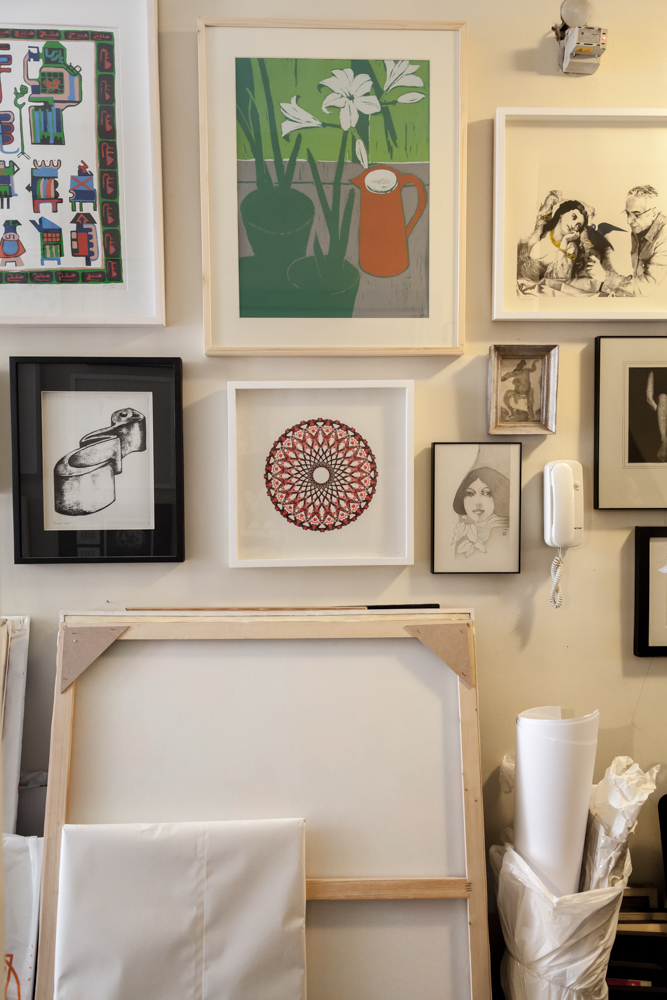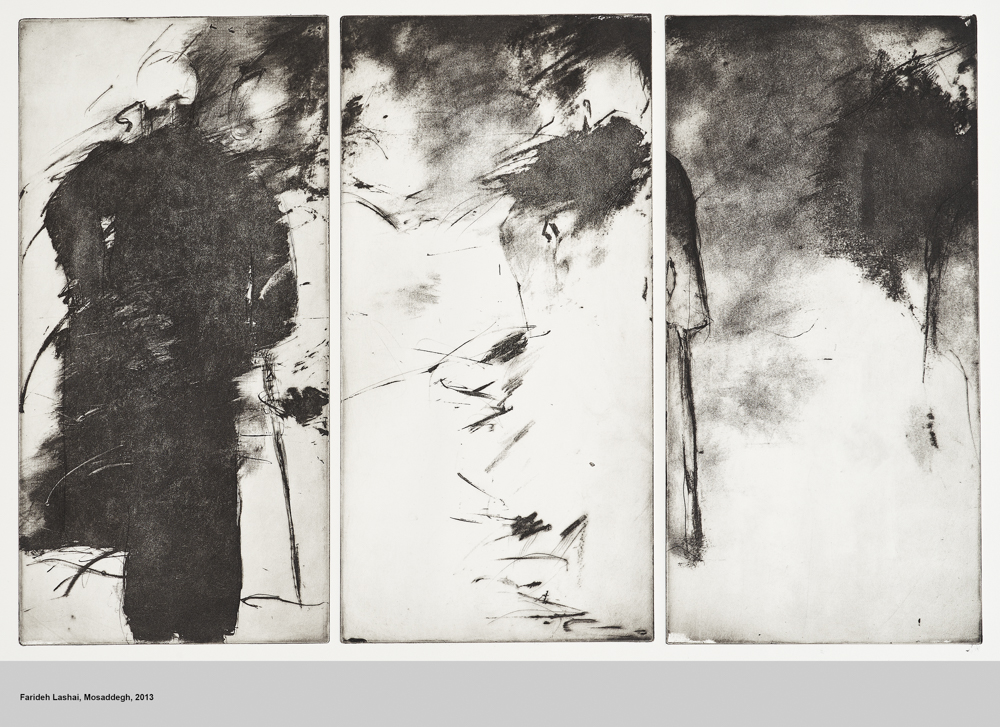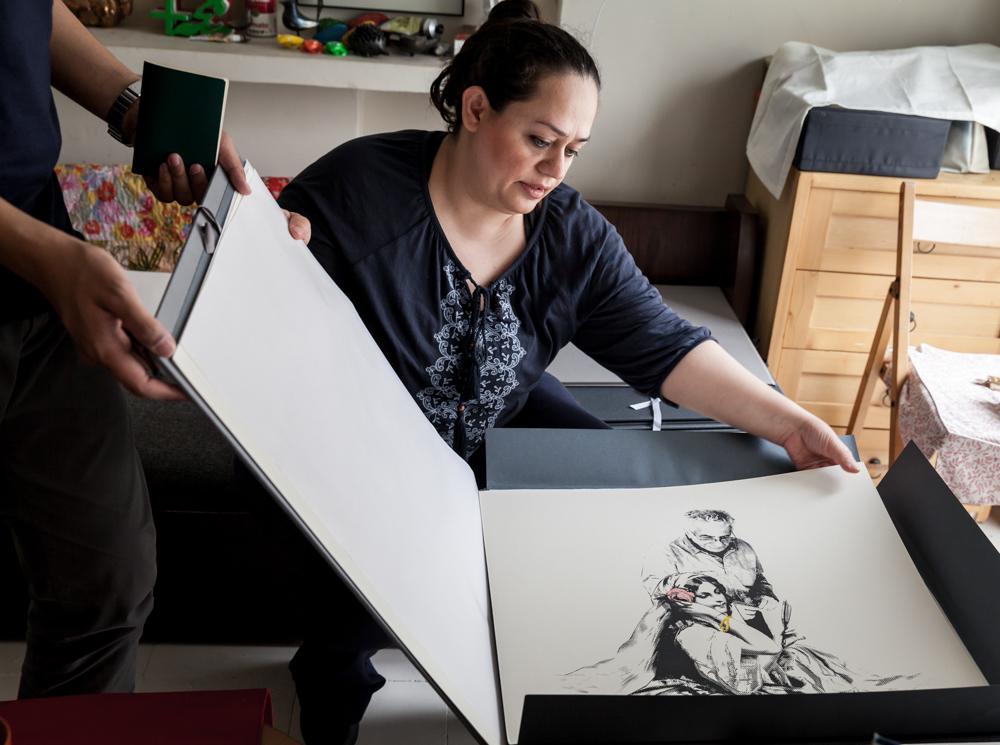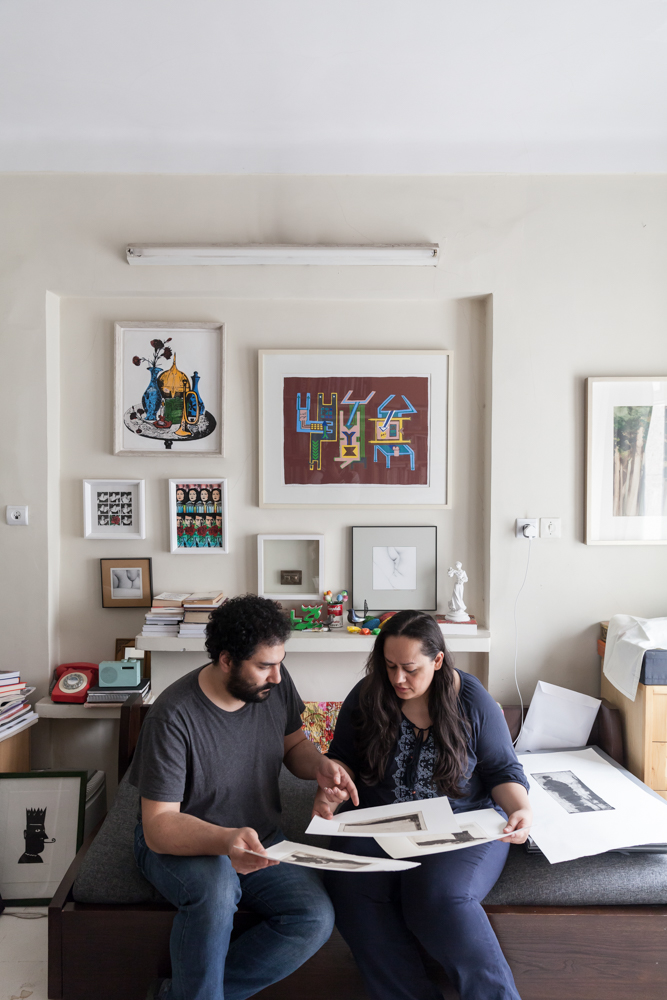IT’S HARD TO DEFINE KA:V EDITIONS, BUT WE’RE SURE THE IRANIAN ART SCENE, OR ANYWHERE ELSE, NEEDS MORE PEOPLE LIKE THEM

KA:V Editions, Photo by Ketsiree Wongwan
KA:V Editions is a studio that is responsible for the publishing of the works of many renowned artists in the region, especially the making of portfolios that are more than just a putting together of a collection of someone’s works and publishing them as a printed edition, but rather collaborations with artists in the creation of somewhat of another piece of art. In addition to its operation as a publishing house, Tarlan Rafiee and Yashar Samimi Mofakham, the two founders of KA:V Editions have also curated a great number of exhibitions both in and outside of Iran under the name Bread & Salt Projects with many of them being the studio’s collaborations with reputable artists in the Middle Eastern region and elsewhere.

KA:V Editions, Photo by Ketsiree Wongwan
Rafiee and Samimi Mofakham were born in 1980 and 1979, respectively. Before the founding of KA:V Editions, people in the Iranian art world knew them as KA:V Studio. In 2008, they worked with a highly talented artist whose lack of expertise and knowledge in printing led the duo to realize the importance of the role of a publishing studio in Iran’s art community. 2010 was the year that they traveled to England to study the know-hows of printing with a London-based studio. It was during these two years in London that KA:V Editions began their first official portfolio project in 2013.

KA:V Editions, Photo by Ketsiree Wongwan

KA:V Editions, Photo by Ketsiree Wongwan

KA:V Editions, Photo by Ketsiree Wongwan
The process was divided into three main steps. The first was when the studio looked for the artist they wanted to work with, the second was the development process, which takes the longest time to finalize due to the many techniques that have to be experimented with and the last and final step was the printing and turning of ideas into printed form. KA:V Editions’ studio space is varied by the type of project they are working on, one interesting example of which is the latest project they did with an Iranian ceramic artist where they rented a spacious studio outside of Tehran to accommodate working with the artist’s ceramic and printmaking pieces. The studio where we met with them in Tehran is used only for small-scale projects.

Image courtesy of KA:V Editions
The philosophy of KA:V Editions is essentially a maintaining of creative control and freedom. The two explained that the majority of the studio’s income comes from the distribution of their works, in which they share the profit with the artists in equal proportion. KA:V Editions collaborates primarily with artists who have considerable work experience and rarely with new artists whose work production tends not to be all that consistent.

Image courtesy of KA:V Editions
AS A CURATOR, WE DARE TO SAY THAT WORKING WITH NEW GENERATION ARTISTS IS SOMEWHAT DIFFICULT
“As a curator, we dare to say that working with new generation artists is somewhat difficult. They’re radical and avant-garde, extremely resolute and there’s nothing conservative left in the way they’re thinking. It’s different from artists of our generation who may be shy to show something. It’s really difficult to work with them but we’re very proud of them. We’ve come to realize that perhaps it’s us who should be adapting ourselves.” From their point of view, working with the younger generation artists is an entirely different experience, especially for the fact that these youngsters never experienced the 8-year period of the Iran-Iraq war in the way they did, which often became the main reason for the difference in the way artists from the two generations look at the world. The most obvious observation is the way young artists deal with historical issues in a more daring manner. Another change they have witnessed over the past several years is the dramatic increase in the number of galleries in Tehran, from five major ones in 2003 to 200 spaces last year. The number is an eminent proof of the proliferating popularity of Tehran’s art community.

KA:V Editions, Photo by Ketsiree Wongwan

KA:V Editions, Photo by Ketsiree Wongwan
Rafiee and Samimi Mofakham refer to galleries in Tehran as the ‘close circle’ with an interesting observation that despite the rapid increase of galleries compared to the past, each space doesn’t possess its own direction. Many still lack professional management and curators while a number of galleries are in the hands of a few groups of people. The latter particularly limits the chance for young artists to have their works shown in a gallery despite the blossoming number of spaces, not to mention the fact that it contributes to the repetition of styles and subject matter of the exhibited works. “There are only 5-6 galleries that are real galleries with professional management and everything and we’re not talking about the size but more about the management,” said Samimi Mofakham. Another interesting issue is the government’s censorship measures implemented on art. Just like any other places in the world, the greater the suppression and restrictions, the more rebellious the artists become with ideas and gimmicks nicely hidden in their art as Rafiee and Samimi Mofakham told us about a recent exhibition at the Tehran Museum of Contemporary Art where some of the works were taken out of the show because “they found kissing, particularly in a public space, problematic.”

KA:V Editions, Photo by Ketsiree Wongwan
KA:V Editions still doesn’t have any specific selection criteria when it comes to the new generation artists they want to work with. For both Rafiee and Samimi Mofakham, selecting an artist to collaborate with has never been easy and there are a great number of things to consider in addition to artistic style. But having talked to them, we’ve come to realize that there are many great young Iranian artists who are forces to be reckoned with and we are pretty sure that if they get to collaborate with KA:V Editions in the future, things will definitely be taken up a notch or two.

KA:V Editions, Photo by Ketsiree Wongwan
TEXT: NAPAT CHARITBUTRA
www.kaveditions.com

